"Partial Diatonic" is defined as a chord that HAS its root in the - "Harmonize Chord Chart," but its species or chord type is NOT in the Harmonized Chord Chart. Partial Diatonic chords are used to link chords without leaving the current key center. Secondary Dominant chords are a big part of this harmonic principle.

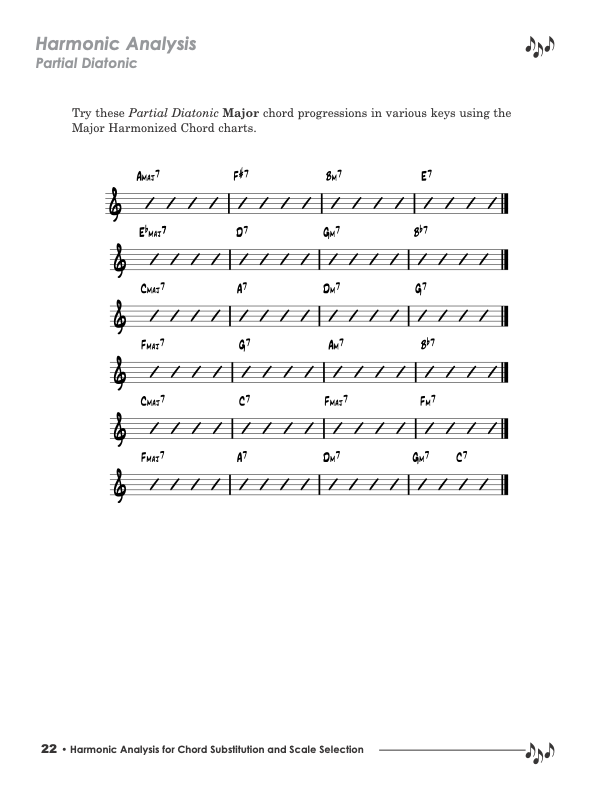

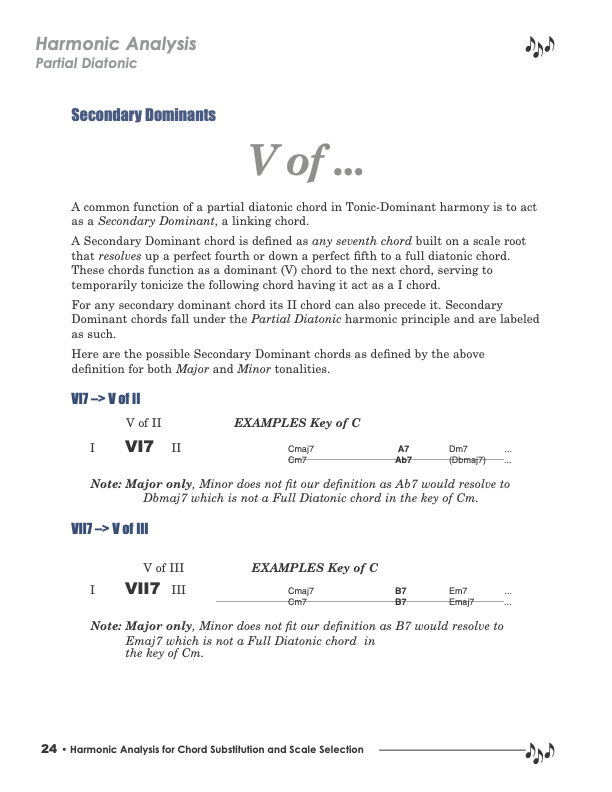
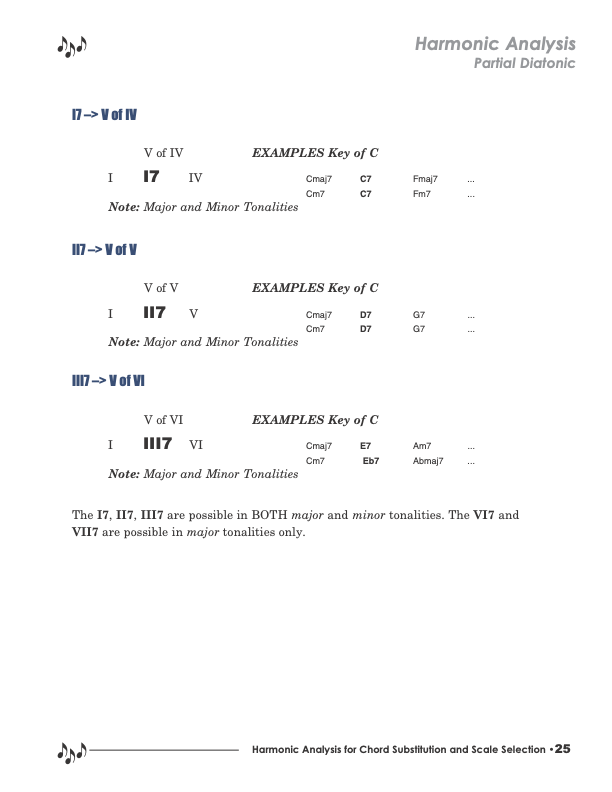
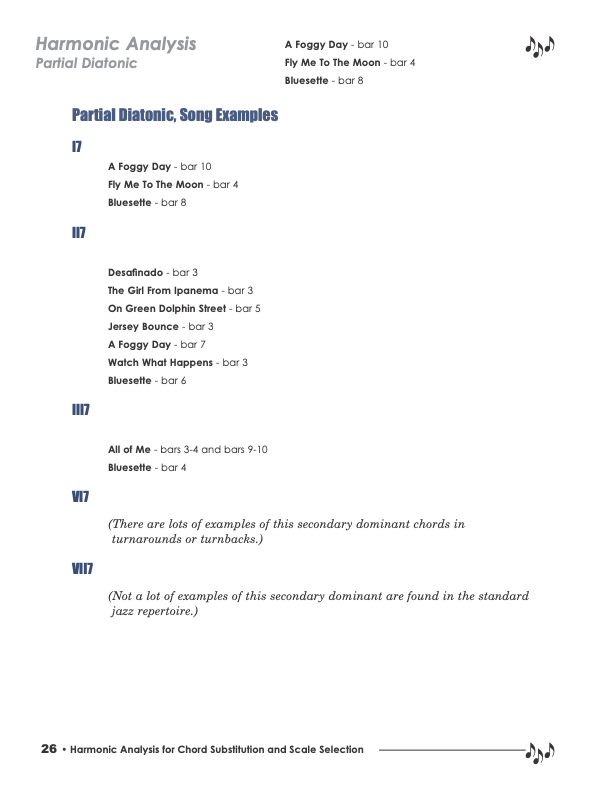
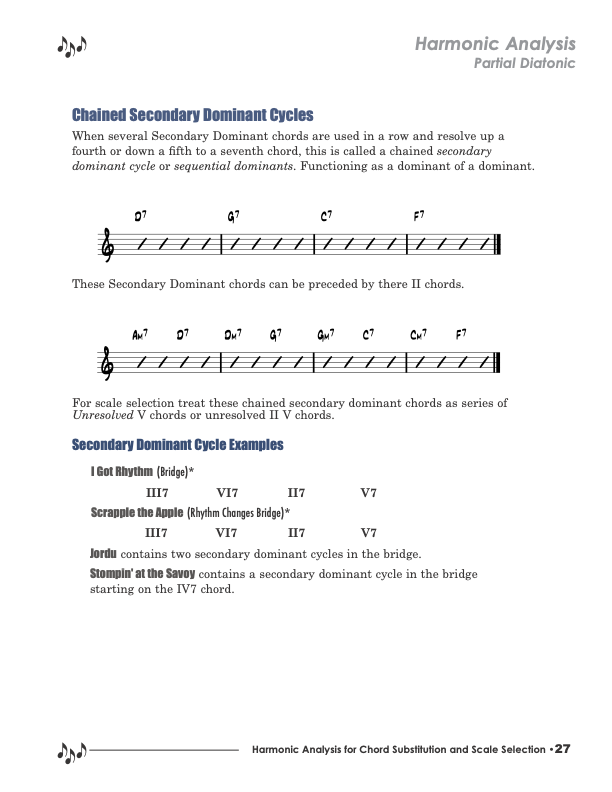
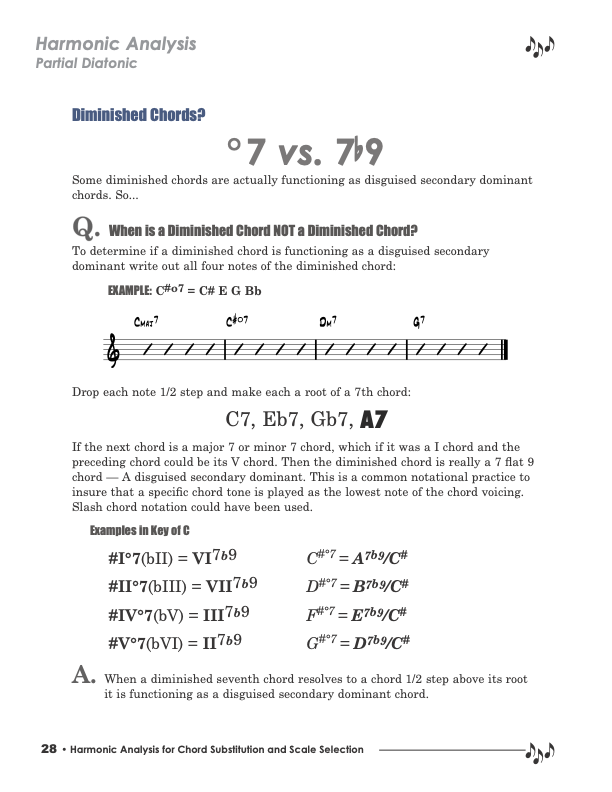
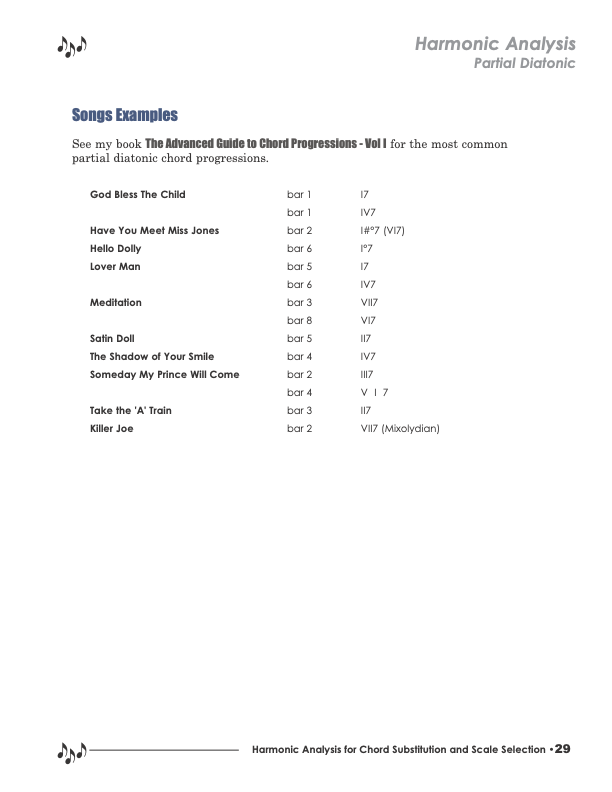
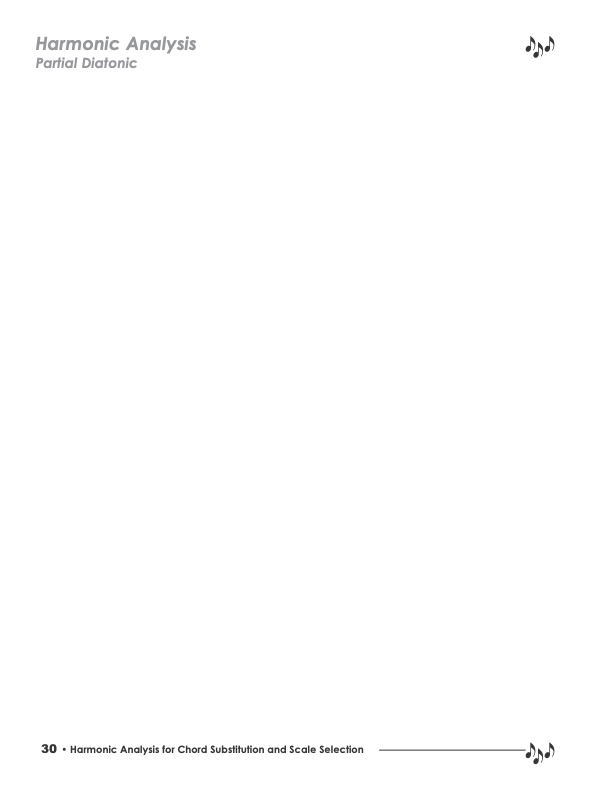










Partial Diatonic is defined as a chord that HAS its root in the - "Harmonize Chord Chart," but its species or chord type is NOT in the Harmonized Chord Chart. Partial Diatonic chords are used to link chords without leaving the current key center.
Available for Premium Site Access Plans Only
Secondary Dominant, partial diatonic, chords are a big part of this the Partial Diatonic harmonic principle.
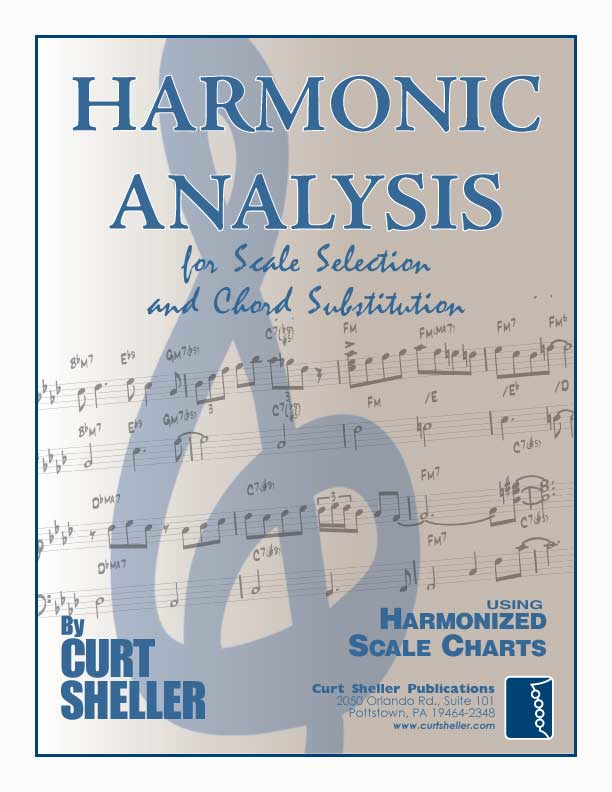
This series, is the book Harmonic Analysis for Chord Substitution and Scale Selection by Curt sheller broken out into individual lessons with additional examples and content. Always, the latest version of the book.
WORKSHEET NOTATION: Label these chords with UPPERCASE roman numerals and the tonality or key center using an uppercase letter. Example: I7, IVm6, I°7, etc. There is no change of tonality or key center.
EXAMPLE 1
4-Part Jazz
Chords
Triads
Using the above chord progression and the Major harmonized chord chart we see a II V I , full diatonic chords in the key of C major. But what about that D7. The root D is the second degree or II in the key of C major but the chord type is not correct. The II chord in a major key is minor or m7, not a 7th chord. This is a Partial Diatonic chord. We label this chord as a II7 a * V of II chord. This chord is traditionally called a secondary dominant chord which are covered later. For the purpose of Root Movement Analysis a secondary dominant chord can be considered a partial diatonic chord.
* A Secondary Dominant chord cover later in this lesson.
Partial Diatonic is defined as a chord that HAS its root in the - "Harmonize Chord Chart," but its species or chord type is NOT in the Harmonized Chord Chart. Partial Diatonic chords are used to link chords without leaving the current key center.
Available for Premium Site Access Plans Only
Secondary Dominant, partial diatonic, chords are a big part of this the Partial Diatonic harmonic principle.

This series, is the book Harmonic Analysis for Chord Substitution and Scale Selection by Curt sheller broken out into individual lessons with additional examples and content. Always, the latest version of the book.
WORKSHEET NOTATION: Label these chords with UPPERCASE roman numerals and the tonality or key center using an uppercase letter. Example: I7, IVm6, I°7, etc. There is no change of tonality or key center.
EXAMPLE 1
4-Part Jazz
Chords
Triads
Using the above chord progression and the Major harmonized chord chart we see a II V I , full diatonic chords in the key of C major. But what about that D7. The root D is the second degree or II in the key of C major but the chord type is not correct. The II chord in a major key is minor or m7, not a 7th chord. This is a Partial Diatonic chord. We label this chord as a II7 a * V of II chord. This chord is traditionally called a secondary dominant chord which are covered later. For the purpose of Root Movement Analysis a secondary dominant chord can be considered a partial diatonic chord.
* A Secondary Dominant chord cover later in this lesson.
Harmonic Analysis - Partial Diatonic
Download the PDF file to explore the Partial Diatonic Major & Minor chord progressions in various keys using the Major & Minor Harmonic Chord Charts .
Secondary Dominants
V of …
A common function of a partial diatonic chord in Tonic-Dominant harmony is to act as a Secondary Dominant, a linking chord.
A Secondary Dominant chord is defined as any seventh chord built on a scale root that resolves up a perfect fourth (P4) or down a perfect fifth (P5) to a Full Diatonic chord. These chords function as a dominant
Here are the possible Secondary Dominant chords as defined by the above definition for both Major and Minor tonalities.
VI7 → V of II
NOTE: Major only, Minor does not fit our definition as Ab7 would resolve to D♭maj7 which is not a Full Diatonic chord in the key of Cm.
VI7 → V of III
NOTE: Major only, Minor does not fit our definition as B7 would resolve to Emaj7 which is not a Full Diatonic chord in the key of Cm.
VI7 → V of IV
NOTE: Major and Minor Tonalities
VI7 → V of V
NOTE: Major and Minor Tonalities
VI7 → V of VI
NOTE: Major and Minor Tonalities
The I7 , II7 , III7 are possible in BOTH major and minor tonalities. The VI7 and VII7 are possible in major tonalities only.
Chained Secondary Dominant Cycles
When several Secondary Dominant chords are used in a row and resolve up a fourth or down a fifth to a seventh chord, this is called a chained secondary dominant cycle or sequential dominants. Functioning as a dominant of a dominant V of… .
Chained Secondary Dominant Cycle
These Secondary Dominant chords can be preceded by there
Chained Secondary Dominant Cycle with Their II Chords
For scale selection treat these Chained Secondary Dominant chords as series of Unresolved V chords or unresolved II V chords.
Chained Secondary Dominant Cycles Examples
I Got Rhythm (Bridge)
Scrapple the Apple (I Got Rhythm Changes
Bridge)
Jordu
Contains two Secondary Dominant cycles in the bridge.
Stompin' at the Savoy
Contains a Secondary Dominant cycle in the bridge starting on the IV7 chord.
Diminished Chords?
°7 vs. 7♭9
Some diminished chords are actually functioning as Disguised Secondary Dominant chords. So…
Q. When is a Diminished Chord NOT a Diminished Chord?
To determine if a diminished chord is functioning as a Disguised Secondary Dominant write out all four notes of the diminished chord: C Eb Gb Bbb (A) .
Drop each note 1/2 step and make each a root of a 7th chord:
C7 , Eb7 , Gb7 , A7
If the next chord is a major 7 or minor 7 chord, which if it was a I chord and the preceding chord could be its V chord. Then the diminished chord is really a 7 flat 9 chord — A Disguised Secondary Dominant. This is a common notational practice to insure that a specific chord tone is played as the lowest note of the chord voicing. Slash chord notation could and should have been used.
Examples in the Key of C
♯I°7 (♭II) = VI7♭9 • V of II
C#°7 = A7♭9/C♯
♯II°7 (♭III) = VII7♭9 • V of III
D♯°7 = B7♭9/C♯
♯IV°7 (♭V) = III7♭9 • V of VI
F♯°7 = E7♭9/C♯
♯V°7 (♭VI) = II7♭9 • V of V
G♯°7 = D7♭9/C♯
A.
When a Diminished Seventh chord resolves to a chord 1/2 step above its root it is functioning as a Disguised Secondary Dominant chord.
Song Examples
Jazz Classics
God Bless The Child
bar 1
I7
Have You Meet Miss Jones
bar 2
I#dim7 Disquised Secondary Dominant
Hello Dolly
bar 6
Idim7 (A True Diminished Chord).
Lover Man
bar 5
I7
bar 6
IV7
Meditation
bar 3
VII7
bar 8
VI7)
Satin Doll
bar 5
II7
bar 7
IV7
The Shadow of Your Smile
bar 4
IV7
Someday My Prince Will Come
bar 2
VI7
Take the 'A' Train
bar 3
II7
The Girl from Ipenama
bar 3
II7
Killer Joe
bar 2
VII7
Checkout the Songs section of LearningUkulele.com , as many of the songs examples above are available.
Related Lessons, Videos, Lesson Series, Songs, Books & Reference Charts, Resources & Assets, Workshops are below.
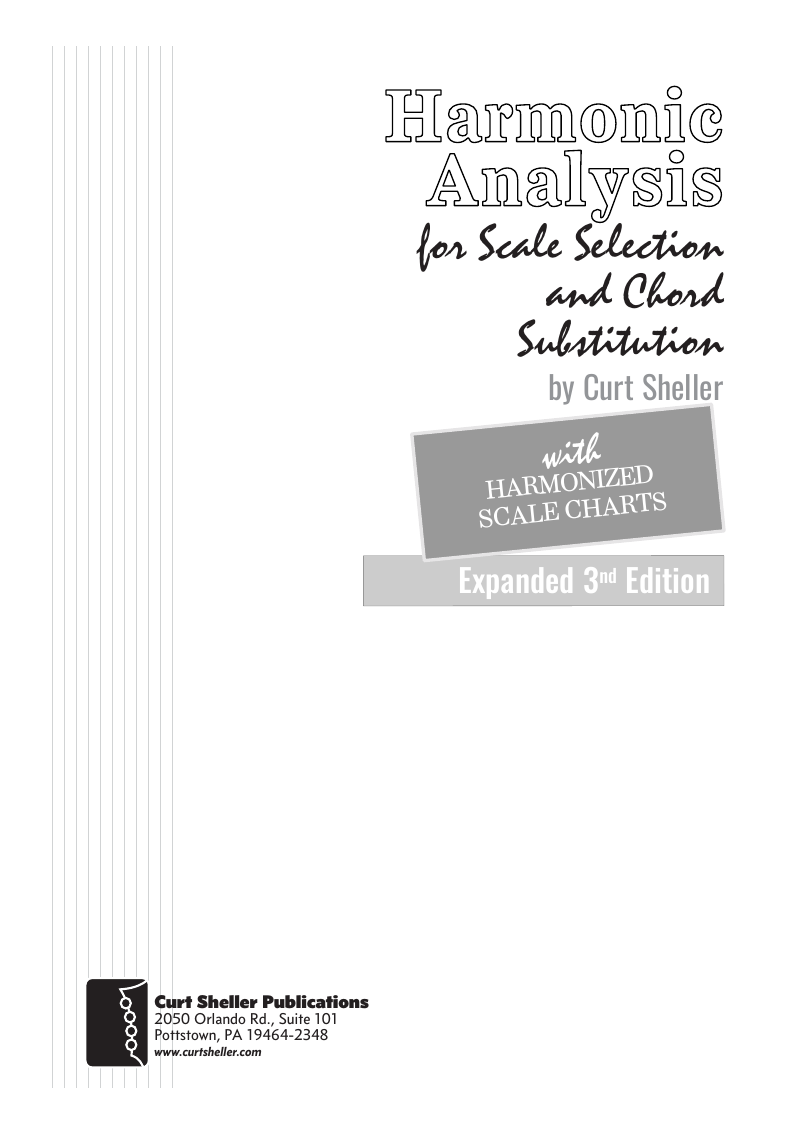
Harmonic Analysis ( HA ) is the process used to determine the harmonic function of chords within a chord progression. A chord progression is defined as a sequence of chords, each chord has a root and has a particular chord type. The relationship of a chord's root to a scale determines its function within that scale's tonality. Once a chord's function is identified, scale selections along with chord and scale substitutions can be made. This process is called Root Movement Analysis ( RMA ). This series of lessons are extracted from my book for use with individual private and on-line students. Each lesson directly corresponds the chapters in my book Harmonic Analysis for Scale Selection and Chord Substitution by Curt Sheller (me).
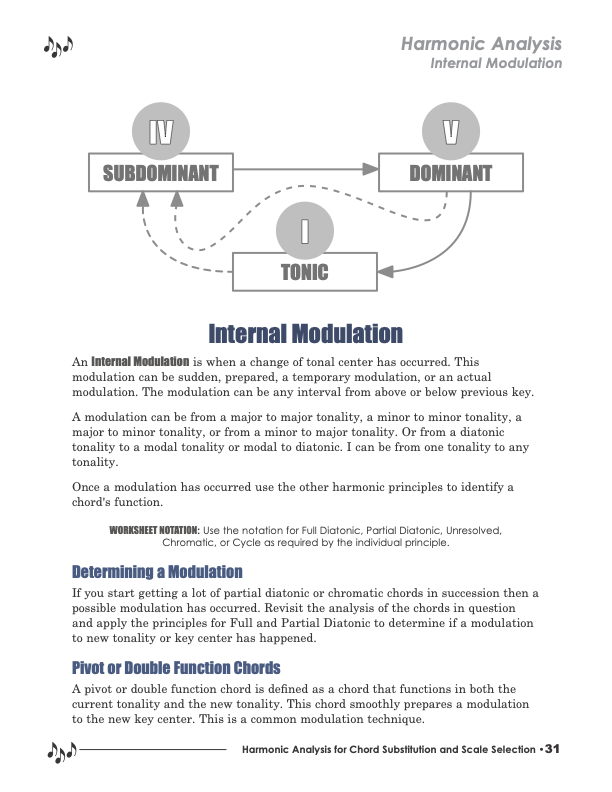
Harmonic Analysis is the understanding of the functional sequence of chords. It is the process used to analyze the harmonic structure of a progression, song, or composition. This analysis is then used to make scale selections for improvisation and chord substitution. This lesson covers the Internal Modulation harmonic principle.
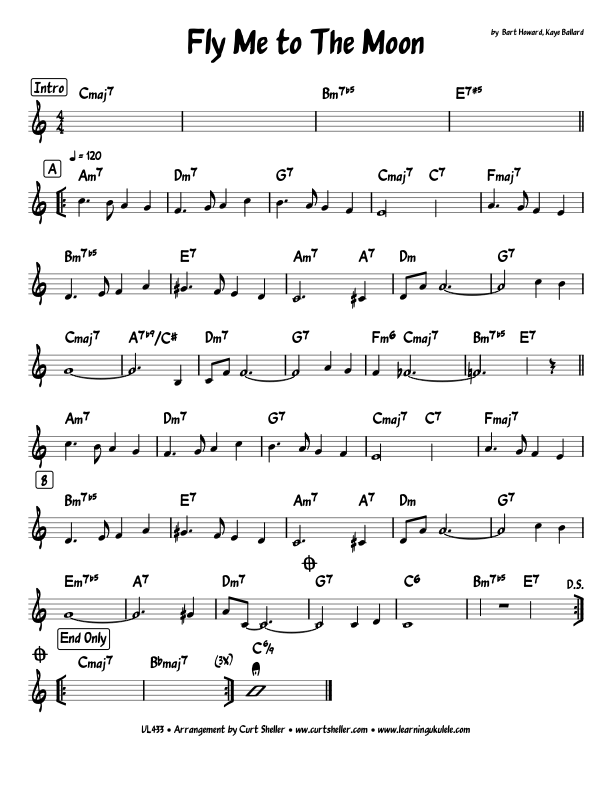
Fly Me to the Moon is a popular standard song written by Bart Howard in 1954. It was titled originally “In Other Words”, and was introduced by Felicia Sanders in cabarets. The song became known popularly as “Fly Me to the Moon” from its first line, and after a few years the publishers changed the title to that officially.
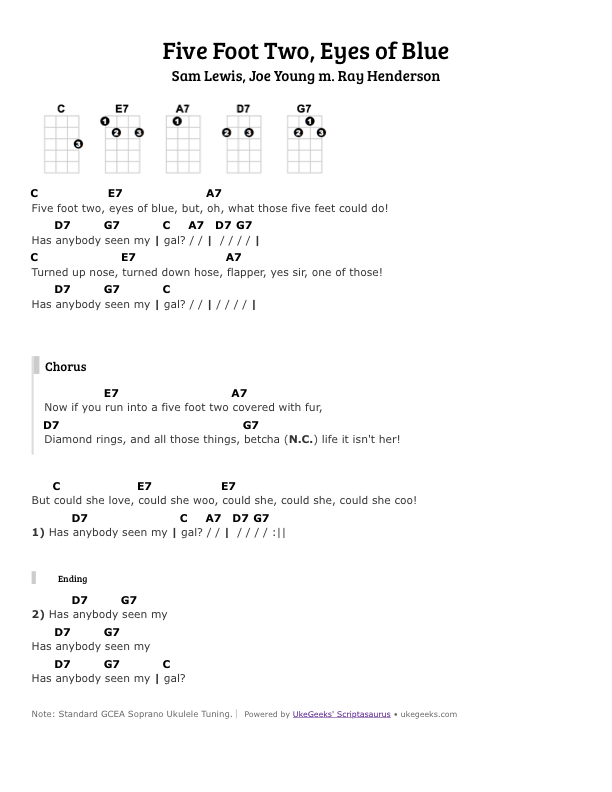
"Has Anybody Seen My Girl? (Five Foot Two, Eyes of Blue)" is an American popular song that achieved its greatest popularity in the 1920s. It is sometimes known simply as "Has Anybody Seen My Girl?" and sometimes simply as "Five Foot Two, Eyes of Blue"; the 1925 Leo Feist, Inc. sheet music gives both of these.

Harmonic Analysis is the understanding of the functional sequence of chords. It is the process used to analyze the harmonic structure of a progression, song or composition. This analysis is then used to make scale selections for improvisation and chord substitution.


return in your investment)—it is this— learning the
f*ckingnotes of your OWN instrument. Sorry for the tough talks—but it is sooooo true!

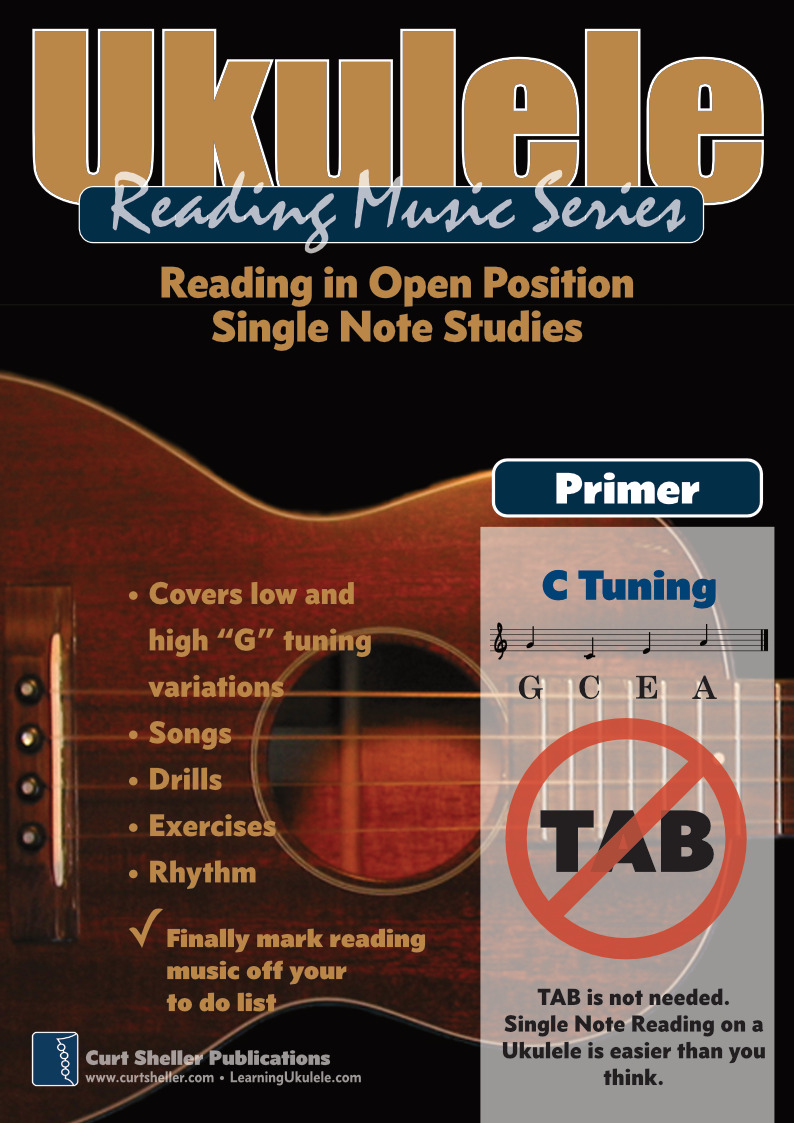
Learn to read single note melodies in the first/open position is a lot easier than you might think. Book: Ukulele – Reading Music Series – Primer
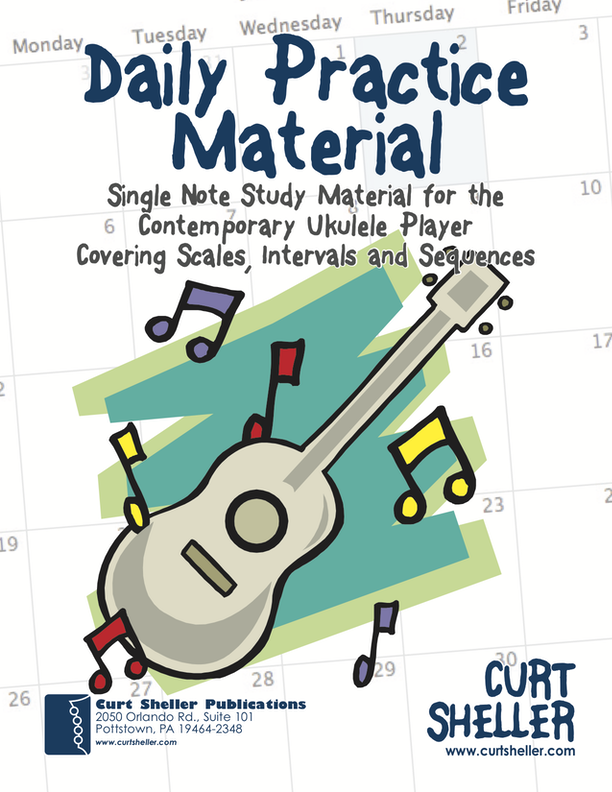
An organized collection of daily practice and reference material for the contemporary ukulele player for developing the vocabulary and knowledge necessary for single note playing. Book: Daily Practice Material for the Contemporary Ukulele
Checkout the Books & Reference Charts for additional Handy, Dandy Reference Charts.
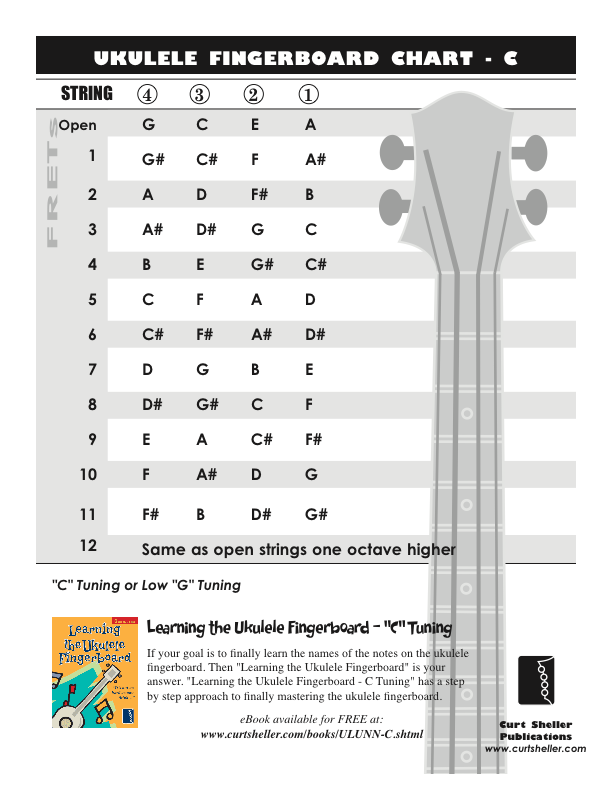
Ukulele Fingerboard Chart for C Tuning, Low or High G – G C E A
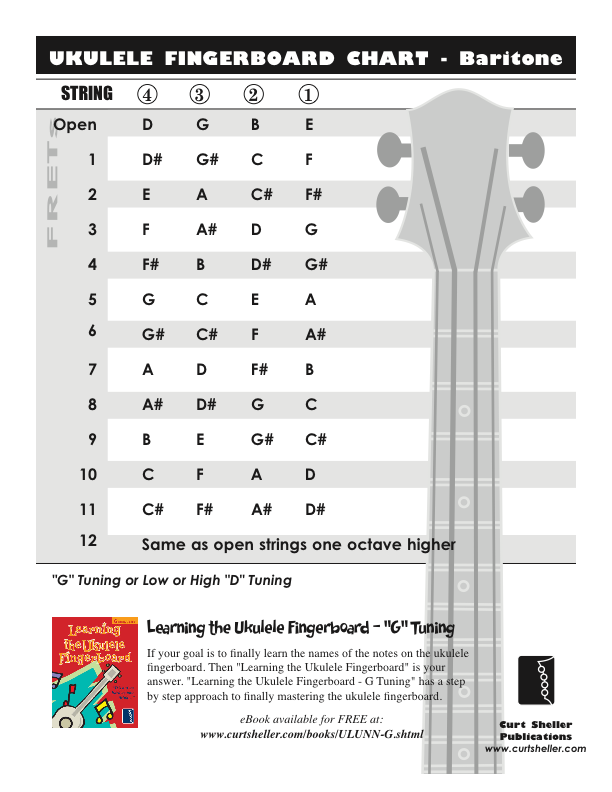
Ukulele Fingerboard Chart for G Tuning, Low or High A – D G B E
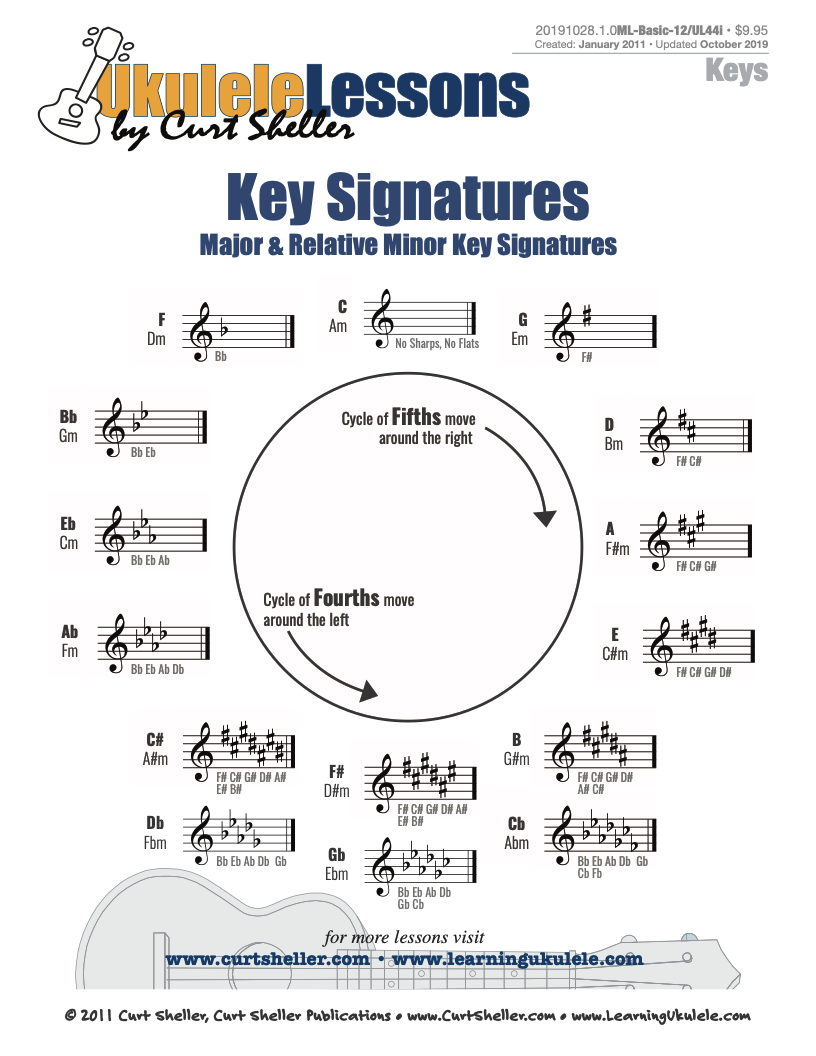
A handy reference chart of all 15 major and relative minor key signatures. US Letter 8.5 x 11 sized (ANSI-A) , A4



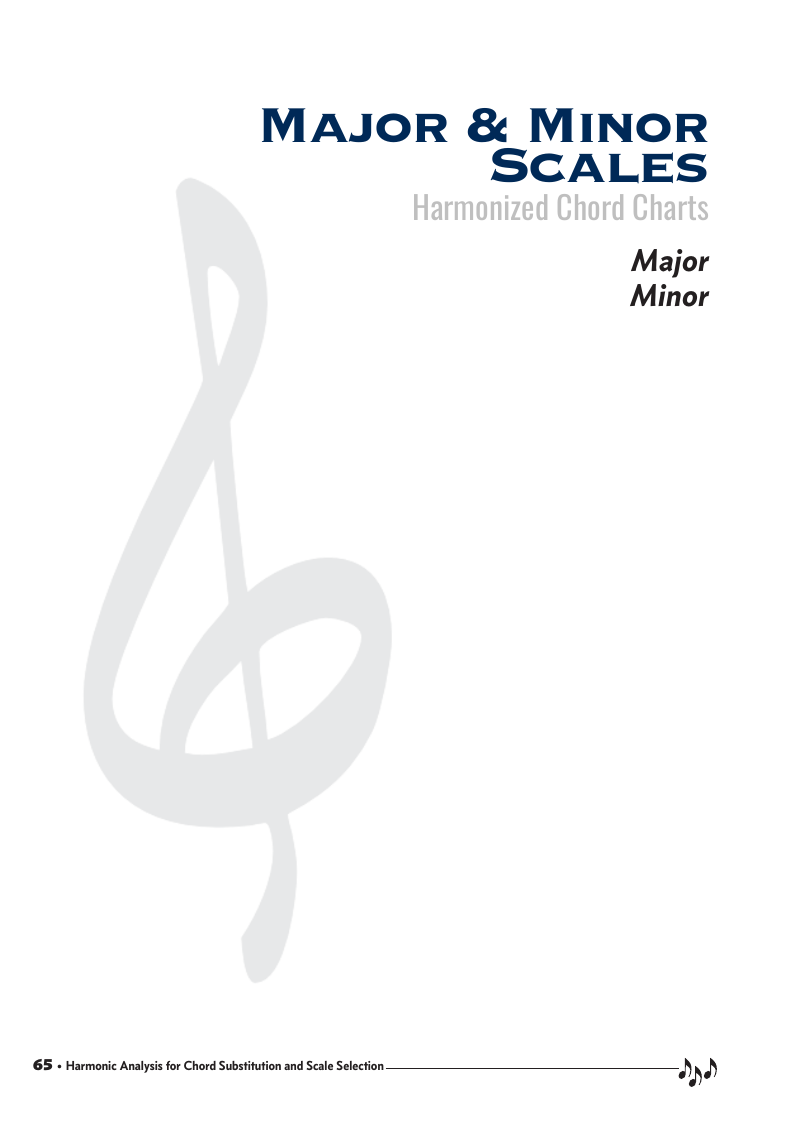
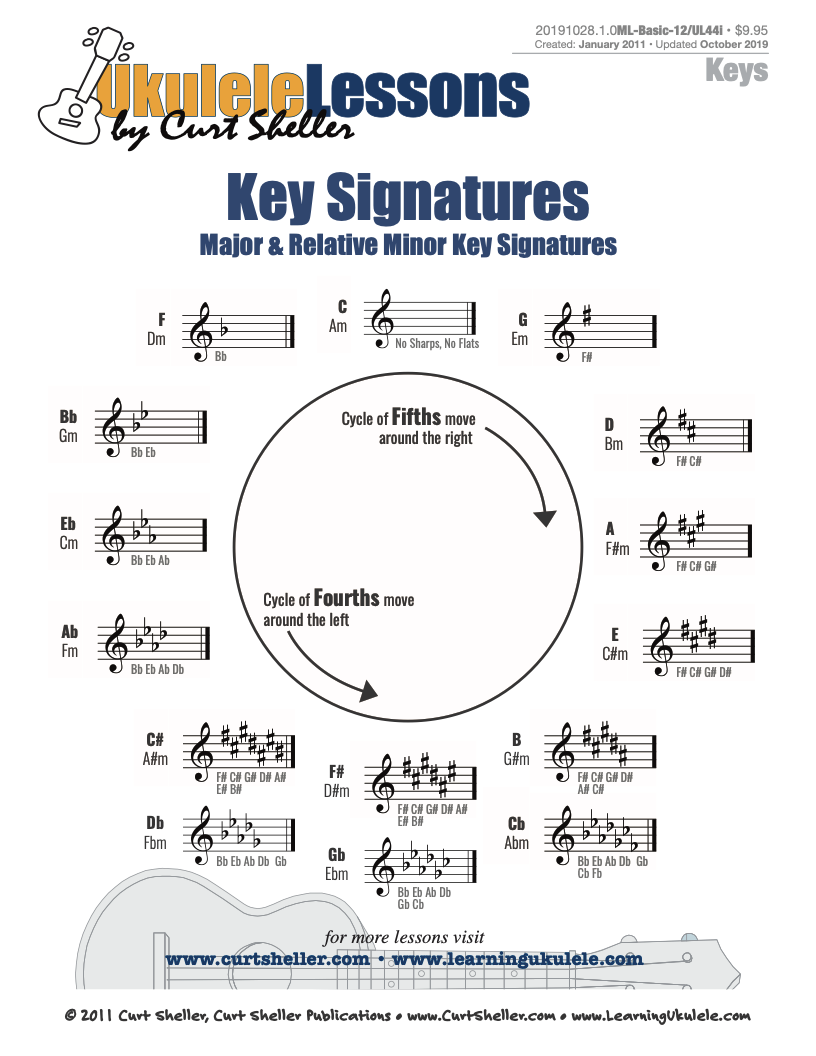
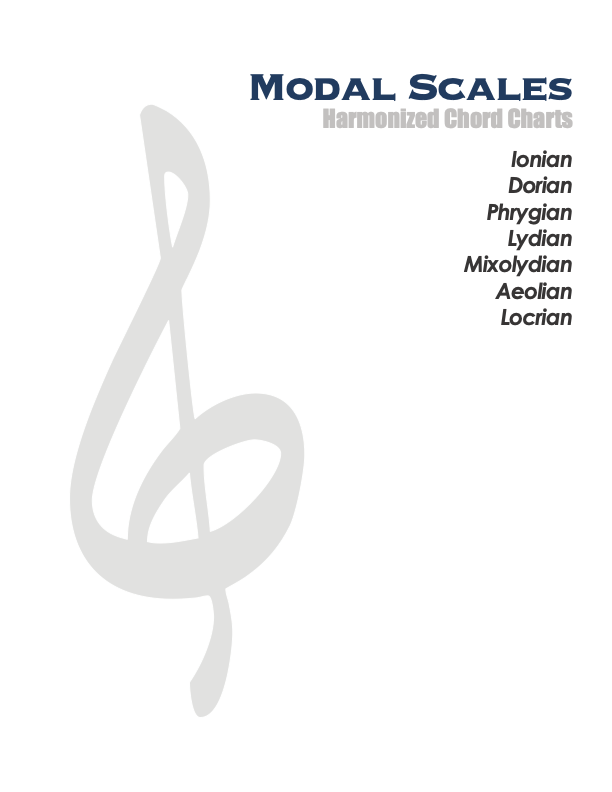
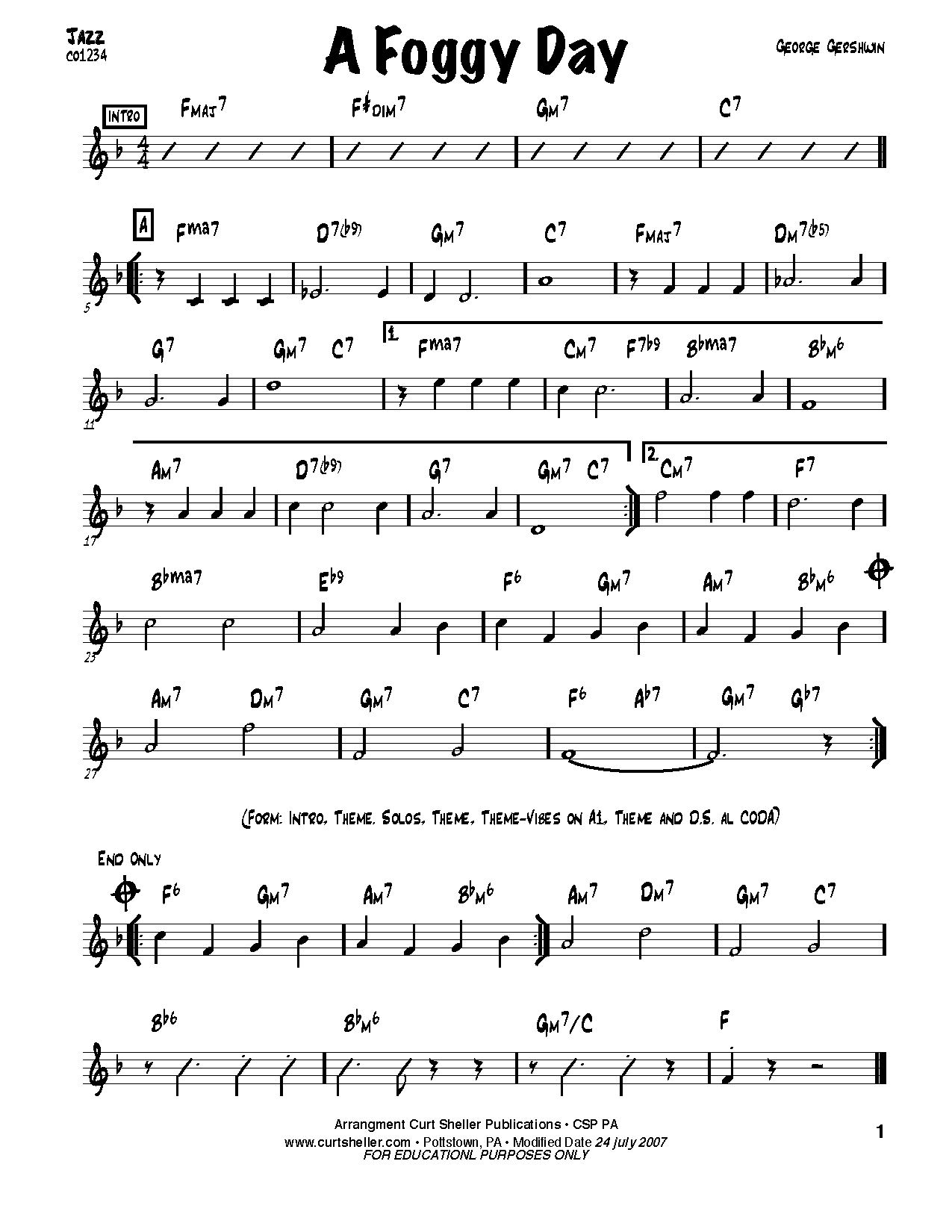

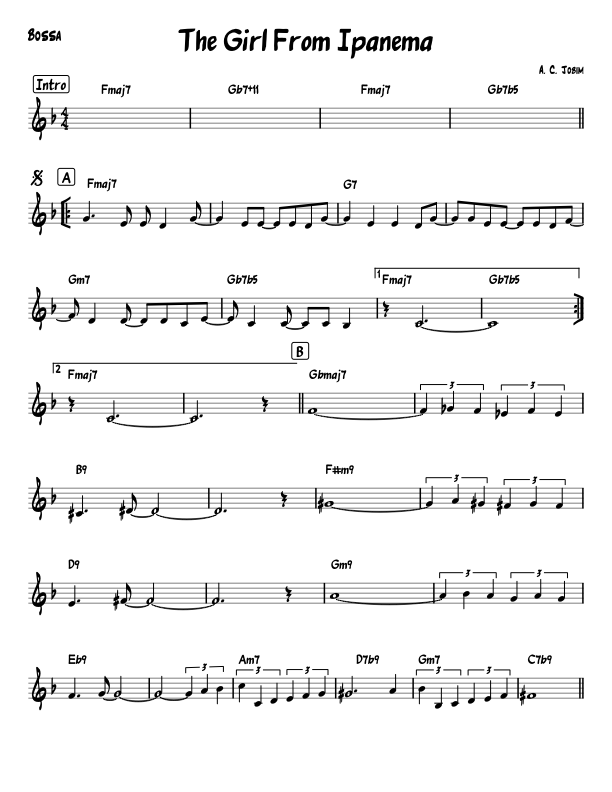
.jpg)